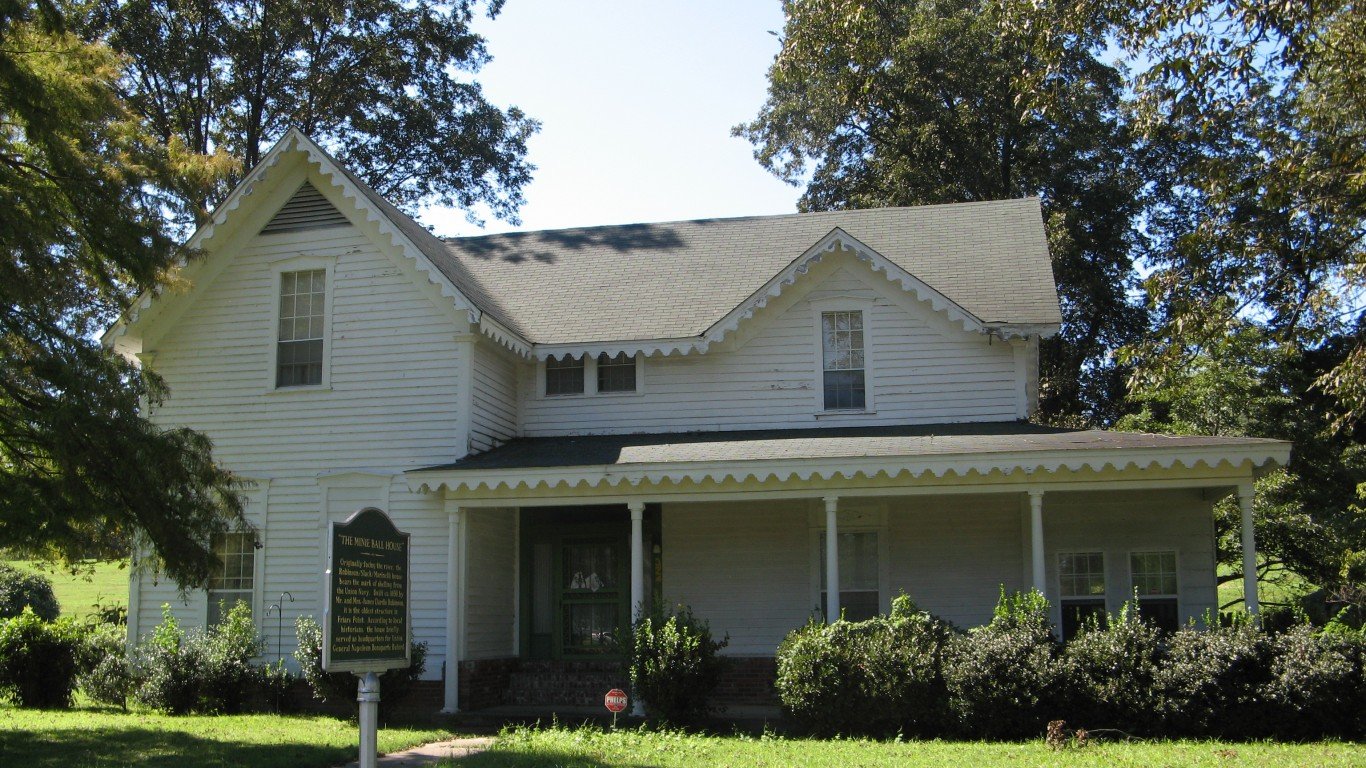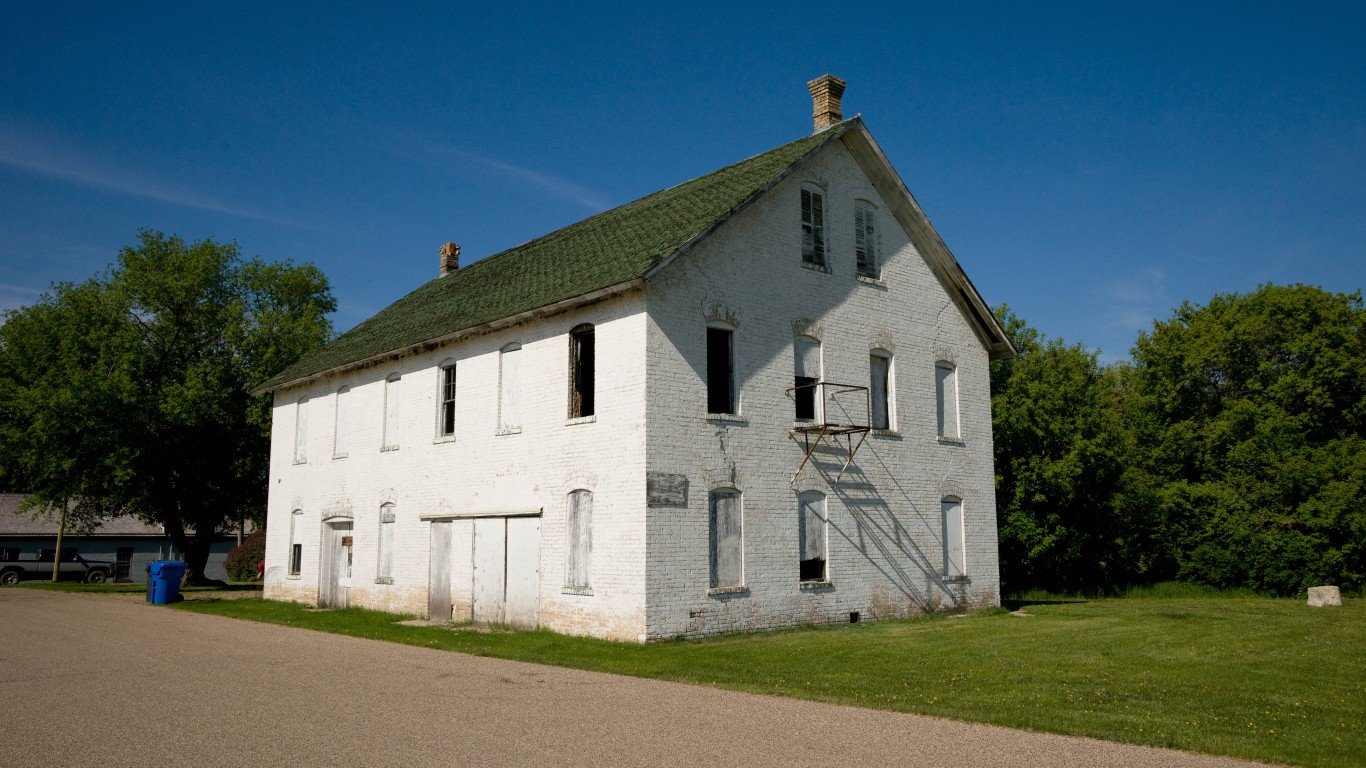

The COVID-19 pandemic sent the U.S. unemployment rate to 14.8% in April 2020, its highest level since the Great Depression. Normally, such an economic shock would result in a spike in the national poverty rate. However, what would have likely been a steep increase has likely been mitigated by the three rounds of federal stimulus payments.
As of 2019, the most recent year with an official poverty rate released by the U.S. Census Bureau’s American Community Survey, 13.4% of the U.S. population lived below the poverty line.
Of course, the poverty rate varies considerably across the country, and even before the COVID-19 unemployment crisis, there were parts of the country where poverty was already widespread — where half of the population or more lived on poverty-level income.
Using five-year estimates from the Census’ 2019 American Community Survey, 24/7 Wall St. identified the U.S. ZIP codes with the highest poverty rates.
Eight ZIP codes on this list are located in Ohio, more than in any other state. Arizona trails Ohio with seven ZIP codes, while Mississippi and South Dakota each have five. Many of these ZIP codes are located in American Indian Reservations, which, for a variety of historical and contemporary reasons, are often among the most economically disadvantaged communities in the United States. Others are in Rust Belt cities that have suffered for decades from the decline of American manufacturing.
The poverty threshold is based on income, and in most of the country, an individual with an annual income of less than $12,880, or a family of four earning less than $26,500, is considered to be living in poverty. Not surprisingly, in every ZIP code on this list with available data, the median household income is lower than the national median of $62,843. Here is a look at the poorest town in every state.
Click here to see the ZIP code with the highest poverty rates in the nation
Click here to see our detailed methodology
50. 62201
> Location: East St. Louis, Illinois
> Poverty rate: 49.0%
> Number of people living below poverty line: 3,357 — 3,698th highest of 20,931 zip codes (tied)
> Households receiving SNAP benefits: 58.2% — 12th highest of 20,930 zip codes
> Median household income: $15,408 — 15th lowest of 20,926 zip codes
[in-text-ad]

49. 85530
> Location: Bylas, Arizona
> Poverty rate: 49.2%
> Number of people living below poverty line: 871 — 10,267th highest of 20,931 zip codes (tied)
> Households receiving SNAP benefits: 44.1% — 118th highest of 20,930 zip codes (tied)
> Median household income: $30,625 — 654th lowest of 20,926 zip codes (tied)
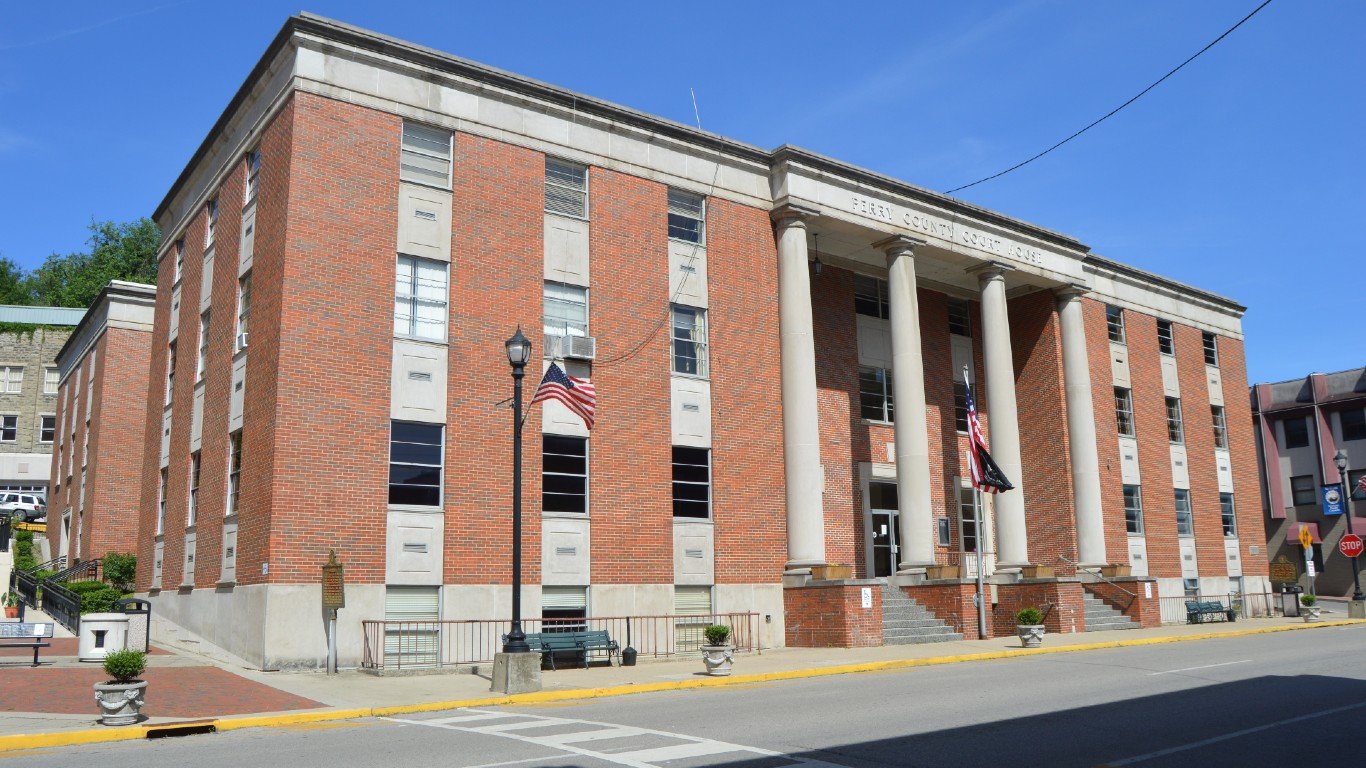
48. 41773
> Location: Vicco, Kentucky
> Poverty rate: 49.2%
> Number of people living below poverty line: 665 — 9,222nd lowest of 20,931 zip codes (tied)
> Households receiving SNAP benefits: 31.9% — 674th highest of 20,930 zip codes (tied)
> Median household income: $22,500 — 106th lowest of 20,926 zip codes (tied)

47. 94130
> Location: San Francisco, California
> Poverty rate: 49.3%
> Number of people living below poverty line: 1,451 — 7,645th highest of 20,931 zip codes (tied)
> Households receiving SNAP benefits: 19.3% — 3,394th highest of 20,930 zip codes (tied)
> Median household income: $54,375 — 9,073rd lowest of 20,926 zip codes (tied)
[in-text-ad-2]

46. 38762
> Location: Mound Bayou, Mississippi
> Poverty rate: 49.6%
> Number of people living below poverty line: 1,223 — 8,552nd highest of 20,931 zip codes (tied)
> Households receiving SNAP benefits: 39.7% — 233rd highest of 20,930 zip codes (tied)
> Median household income: $24,872 — 186th lowest of 20,926 zip codes
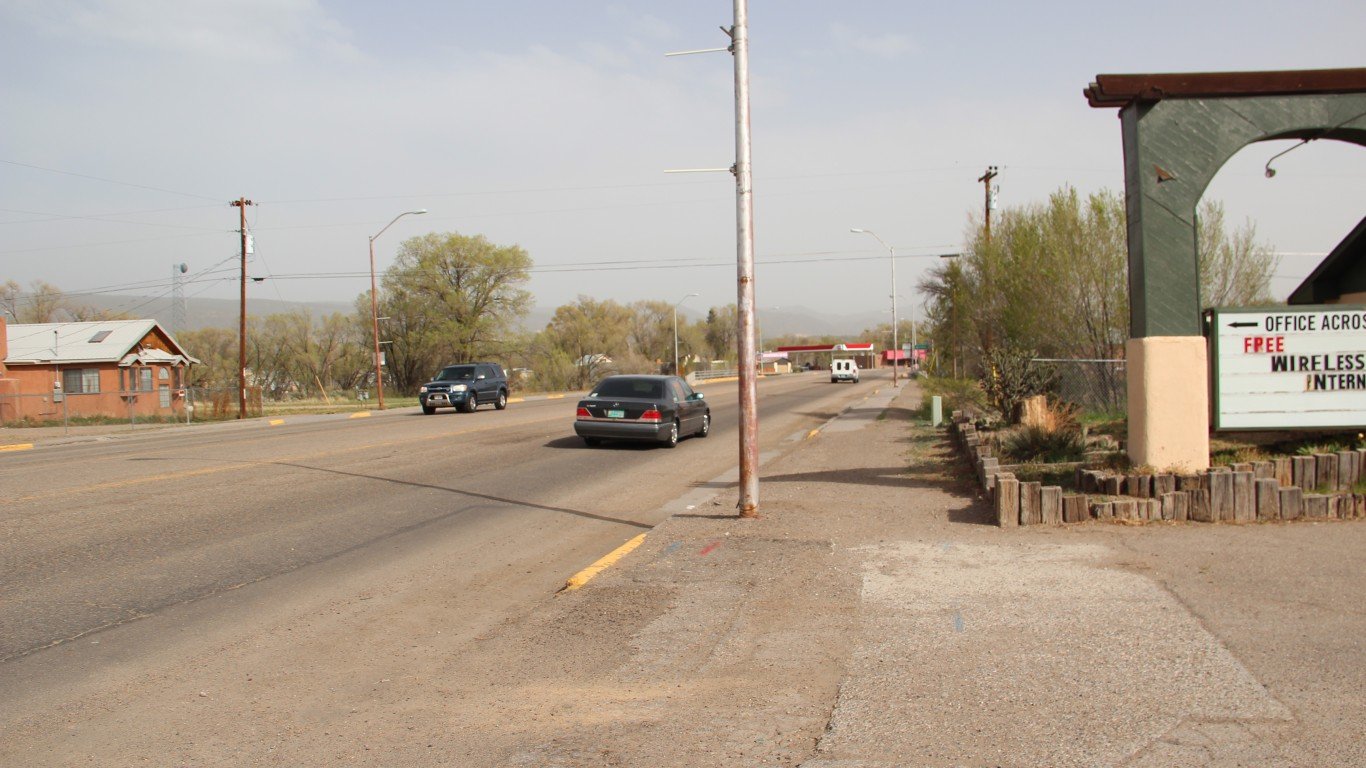
45. 87013
> Location: Cuba, New Mexico
> Poverty rate: 50.0%
> Number of people living below poverty line: 2,758 — 4,611th highest of 20,931 zip codes (tied)
> Households receiving SNAP benefits: 30.8% — 772nd highest of 20,930 zip codes (tied)
> Median household income: $27,106 — 317th lowest of 20,926 zip codes
[in-text-ad]

44. 48201
> Location: Detroit, Michigan
> Poverty rate: 50.8%
> Number of people living below poverty line: 7,568 — 930th highest of 20,931 zip codes (tied)
> Households receiving SNAP benefits: 39.1% — 254th highest of 20,930 zip codes (tied)
> Median household income: $17,331 — 26th lowest of 20,926 zip codes

43. 01105
> Location: Springfield, Massachusetts
> Poverty rate: 50.8%
> Number of people living below poverty line: 5,844 — 1,610th highest of 20,931 zip codes
> Households receiving SNAP benefits: 63.5% — 6th highest of 20,930 zip codes
> Median household income: $19,427 — 42nd lowest of 20,926 zip codes

42. 71202
> Location: Monroe, Louisiana
> Poverty rate: 51.3%
> Number of people living below poverty line: 12,817 — 228th highest of 20,931 zip codes
> Households receiving SNAP benefits: 42.0% — 168th highest of 20,930 zip codes
> Median household income: $23,285 — 128th lowest of 20,926 zip codes
[in-text-ad-2]

41. 87825
> Location: Alamo, New Mexico
> Poverty rate: 51.4%
> Number of people living below poverty line: 1,162 — 8,824th highest of 20,931 zip codes (tied)
> Households receiving SNAP benefits: 13.6% — 7,042nd highest of 20,930 zip codes (tied)
> Median household income: $26,278 — 256th lowest of 20,926 zip codes

40. 93283
> Location: Weldon, California
> Poverty rate: 51.5%
> Number of people living below poverty line: 1,153 — 8,874th highest of 20,931 zip codes (tied)
> Households receiving SNAP benefits: 26.4% — 1,328th highest of 20,930 zip codes (tied)
> Median household income: $26,458 — 273rd lowest of 20,926 zip codes
[in-text-ad]
39. 54150
> Location: Neopit, Wisconsin
> Poverty rate: 51.8%
> Number of people living below poverty line: 563 — 8,315th lowest of 20,931 zip codes (tied)
> Households receiving SNAP benefits: 29.2% — 944th highest of 20,930 zip codes (tied)
> Median household income: $29,966 — 579th lowest of 20,926 zip codes

38. 85550
> Location: San Carlos, Arizona
> Poverty rate: 51.8%
> Number of people living below poverty line: 2,708 — 4,697th highest of 20,931 zip codes (tied)
> Households receiving SNAP benefits: 53.5% — 23rd highest of 20,930 zip codes
> Median household income: $33,051 — 1,034th lowest of 20,926 zip codes
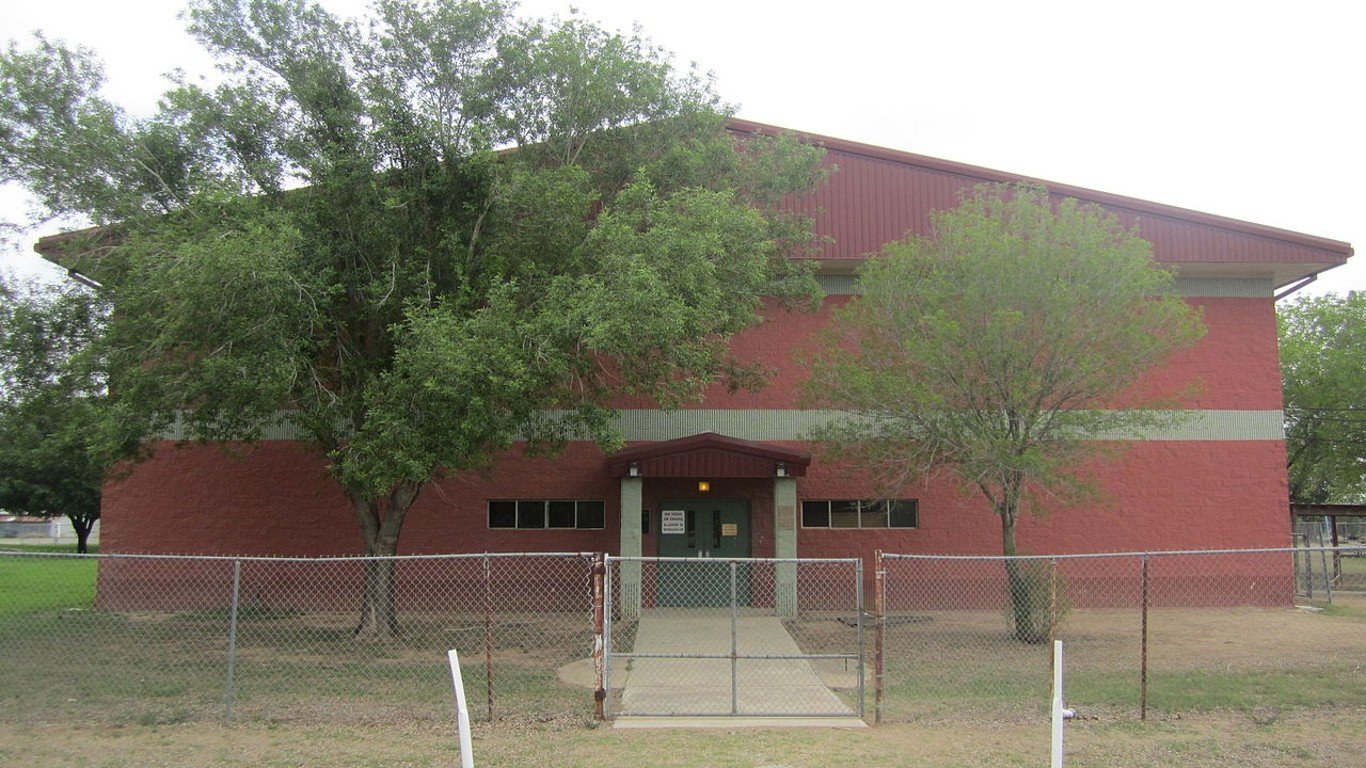
37. 78829
> Location: Batesville, Texas
> Poverty rate: 51.9%
> Number of people living below poverty line: 752 — 9,864th lowest of 20,931 zip codes (tied)
> Households receiving SNAP benefits: 51.6% — 29th highest of 20,930 zip codes (tied)
> Median household income: $34,231 — 1,230th lowest of 20,926 zip codes
[in-text-ad-2]

36. 43222
> Location: Columbus, Ohio
> Poverty rate: 52.1%
> Number of people living below poverty line: 2,113 — 5,839th highest of 20,931 zip codes (tied)
> Households receiving SNAP benefits: 52.0% — 26th highest of 20,930 zip codes (tied)
> Median household income: $27,266 — 334th lowest of 20,926 zip codes

35. 45232
> Location: Cincinnati, Ohio
> Poverty rate: 52.2%
> Number of people living below poverty line: 3,973 — 3,012th highest of 20,931 zip codes (tied)
> Households receiving SNAP benefits: 48.4% — 60th highest of 20,930 zip codes
> Median household income: $19,712 — 48th lowest of 20,926 zip codes
[in-text-ad]
34. 79845
> Location: Presidio, Texas
> Poverty rate: 52.3%
> Number of people living below poverty line: 2,292 — 5,457th highest of 20,931 zip codes (tied)
> Households receiving SNAP benefits: 45.0% — 107th highest of 20,930 zip codes (tied)
> Median household income: $20,244 — 58th lowest of 20,926 zip codes

33. 87319
> Location: Mentmore, New Mexico
> Poverty rate: 52.3%
> Number of people living below poverty line: 1,053 — 9,342nd highest of 20,931 zip codes (tied)
> Households receiving SNAP benefits: 25.8% — 1,430th highest of 20,930 zip codes (tied)
> Median household income: $24,279 — 158th lowest of 20,926 zip codes

32. 44104
> Location: Cleveland, Ohio
> Poverty rate: 52.5%
> Number of people living below poverty line: 10,404 — 413th highest of 20,931 zip codes
> Households receiving SNAP benefits: 51.5% — 31st highest of 20,930 zip codes (tied)
> Median household income: $16,999 — 20th lowest of 20,926 zip codes
[in-text-ad-2]
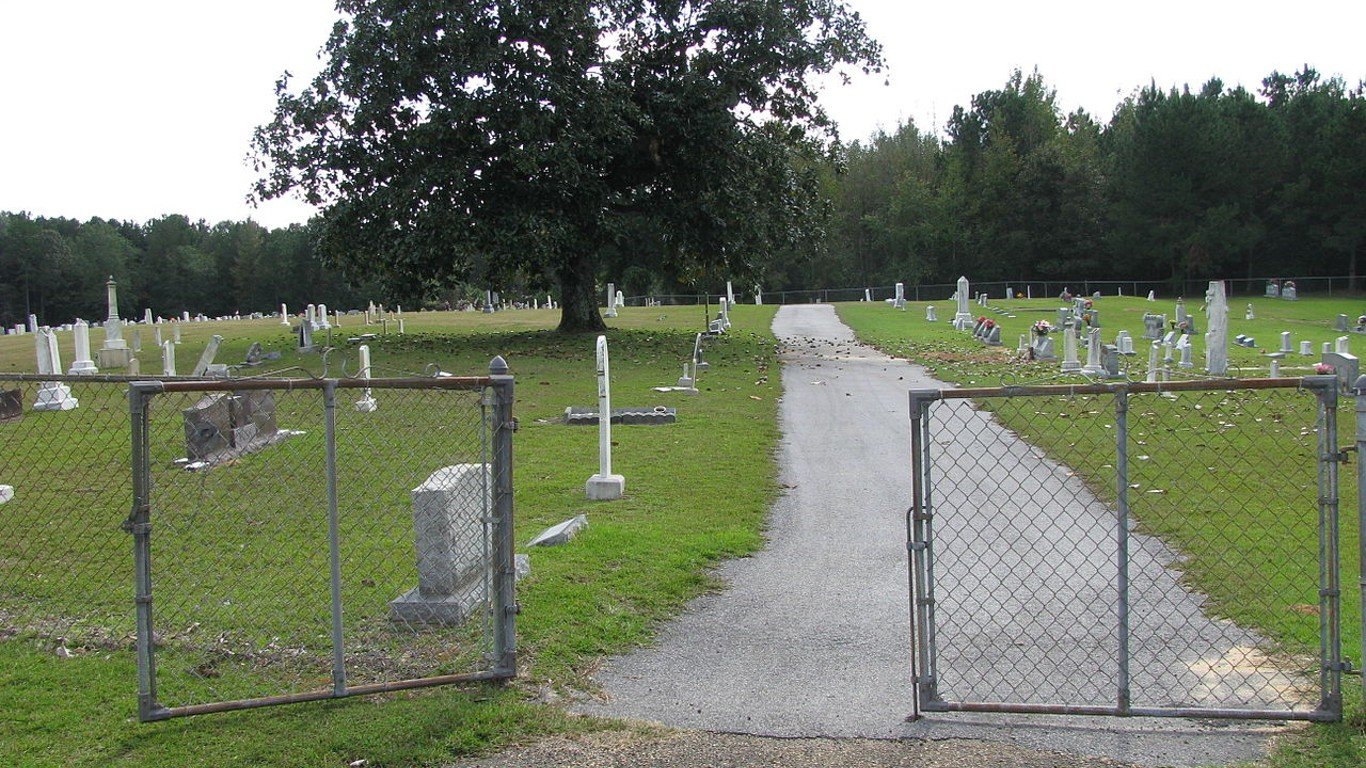
31. 39057
> Location: Conehatta, Mississippi
> Poverty rate: 52.5%
> Number of people living below poverty line: 1,256 — 8,422nd highest of 20,931 zip codes (tied)
> Households receiving SNAP benefits: 23.7% — 1,916th highest of 20,930 zip codes (tied)
> Median household income: $26,845 — 299th lowest of 20,926 zip codes

30. 44510
> Location: Youngstown, Ohio
> Poverty rate: 52.6%
> Number of people living below poverty line: 1,373 — 7,938th highest of 20,931 zip codes (tied)
> Households receiving SNAP benefits: 65.5% — 4th highest of 20,930 zip codes
> Median household income: $17,011 — 21st lowest of 20,926 zip codes
[in-text-ad]
29. 38631
> Location: Friars Point, Mississippi
> Poverty rate: 52.7%
> Number of people living below poverty line: 778 — 10,064th lowest of 20,931 zip codes (tied)
> Households receiving SNAP benefits: 41.5% — 175th highest of 20,930 zip codes (tied)
> Median household income: $19,796 — 52nd lowest of 20,926 zip codes
28. 39169
> Location: Tchula, Mississippi
> Poverty rate: 52.7%
> Number of people living below poverty line: 1,350 — 8,038th highest of 20,931 zip codes (tied)
> Households receiving SNAP benefits: 25.6% — 1,469th highest of 20,930 zip codes (tied)
> Median household income: $16,125 — 18th lowest of 20,926 zip codes

27. 87323
> Location: Thoreau, New Mexico
> Poverty rate: 52.8%
> Number of people living below poverty line: 2,114 — 5,835th highest of 20,931 zip codes (tied)
> Households receiving SNAP benefits: 29.8% — 874th highest of 20,930 zip codes (tied)
> Median household income: $20,137 — 55th lowest of 20,926 zip codes
[in-text-ad-2]

26. 13202
> Location: Syracuse, New York
> Poverty rate: 53.9%
> Number of people living below poverty line: 3,118 — 4,036th highest of 20,931 zip codes (tied)
> Households receiving SNAP benefits: 38.3% — 281st highest of 20,930 zip codes (tied)
> Median household income: $20,196 — 56th lowest of 20,926 zip codes
25. 86507
> Location: Lukachukai, Arizona
> Poverty rate: 54.4%
> Number of people living below poverty line: 1,263 — 8,394th highest of 20,931 zip codes (tied)
> Households receiving SNAP benefits: 36.2% — 377th highest of 20,930 zip codes (tied)
> Median household income: $22,885 — 118th lowest of 20,926 zip codes
[in-text-ad]

24. 96737
> Location: Hawaiian Ocean View, Hawaii
> Poverty rate: 55.2%
> Number of people living below poverty line: 2,764 — 4,602nd highest of 20,931 zip codes
> Households receiving SNAP benefits: 47.5% — 69th highest of 20,930 zip codes (tied)
> Median household income: $15,654 — 17th lowest of 20,926 zip codes
23. 38769
> Location: Rosedale, Mississippi
> Poverty rate: 55.4%
> Number of people living below poverty line: 950 — 9,842nd highest of 20,931 zip codes (tied)
> Households receiving SNAP benefits: 47.2% — 73rd highest of 20,930 zip codes
> Median household income: $17,115 — 23rd lowest of 20,926 zip codes
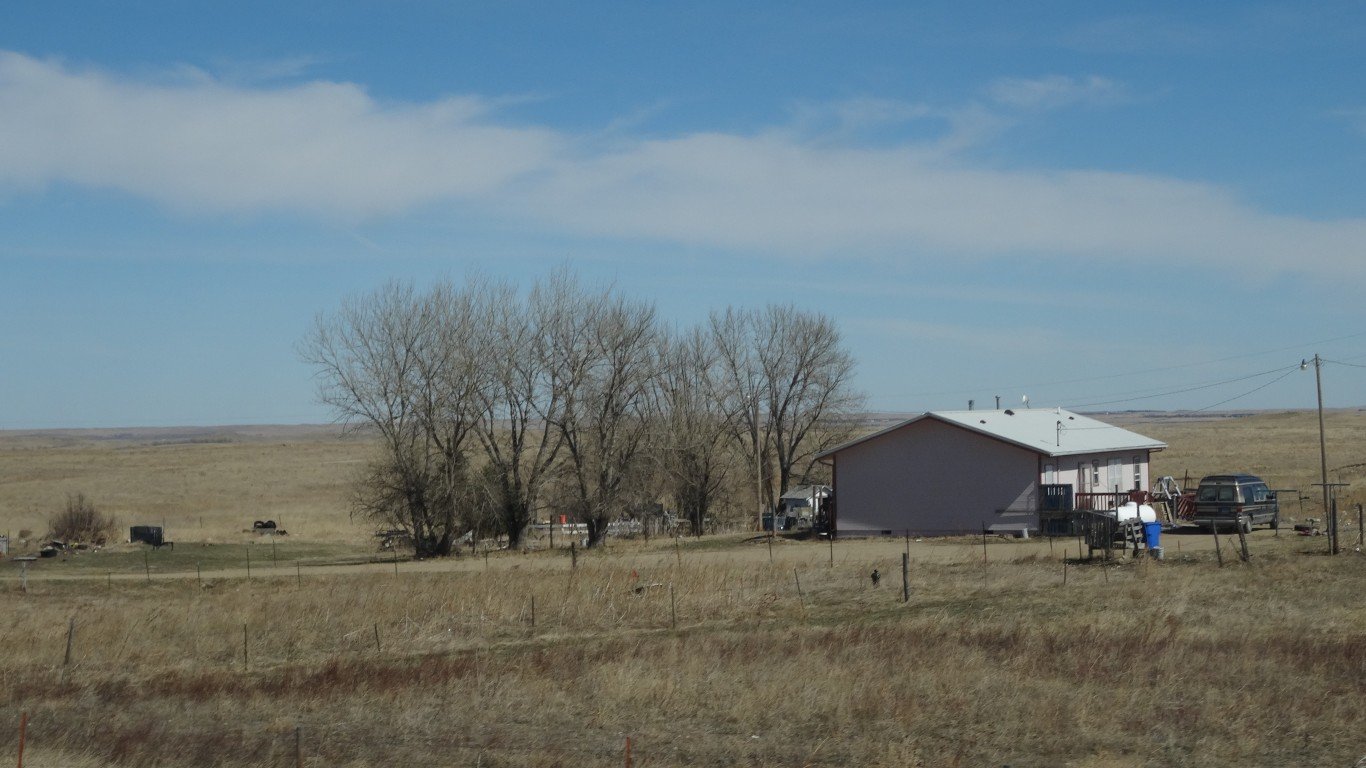
22. 57566
> Location: Parmelee, South Dakota
> Poverty rate: 56.2%
> Number of people living below poverty line: 706 — 9,525th lowest of 20,931 zip codes (tied)
> Households receiving SNAP benefits: 38.3% — 281st highest of 20,930 zip codes (tied)
> Median household income: $25,202 — 208th lowest of 20,926 zip codes
[in-text-ad-2]
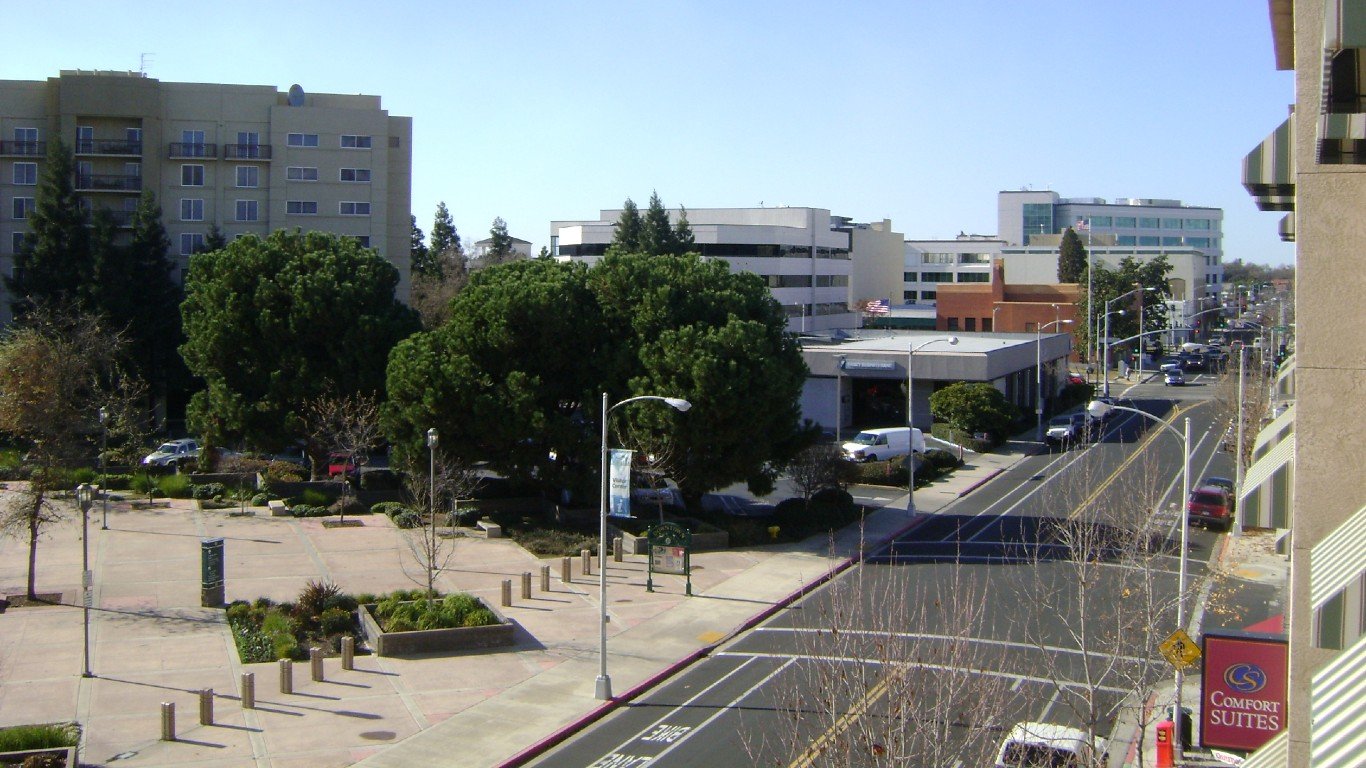
21. 93261
> Location: Richgrove, California
> Poverty rate: 56.7%
> Number of people living below poverty line: 1,379 — 7,913th highest of 20,931 zip codes (tied)
> Households receiving SNAP benefits: 30.8% — 772nd highest of 20,930 zip codes (tied)
> Median household income: $21,010 — 67th lowest of 20,926 zip codes

20. 44507
> Location: Youngstown, Ohio
> Poverty rate: 56.8%
> Number of people living below poverty line: 2,923 — 4,346th highest of 20,931 zip codes
> Households receiving SNAP benefits: 55.4% — 18th highest of 20,930 zip codes
> Median household income: $18,900 — 40th lowest of 20,926 zip codes
[in-text-ad]

19. 43604
> Location: Toledo, Ohio
> Poverty rate: 56.9%
> Number of people living below poverty line: 4,830 — 2,266th highest of 20,931 zip codes
> Households receiving SNAP benefits: 51.5% — 31st highest of 20,930 zip codes (tied)
> Median household income: $15,098 — 13th lowest of 20,926 zip codes

18. 86031
> Location: Whitecone, Arizona
> Poverty rate: 57.2%
> Number of people living below poverty line: 1,001 — 9,588th highest of 20,931 zip codes (tied)
> Households receiving SNAP benefits: 36.6% — 363rd highest of 20,930 zip codes (tied)
> Median household income: $18,889 — 39th lowest of 20,926 zip codes
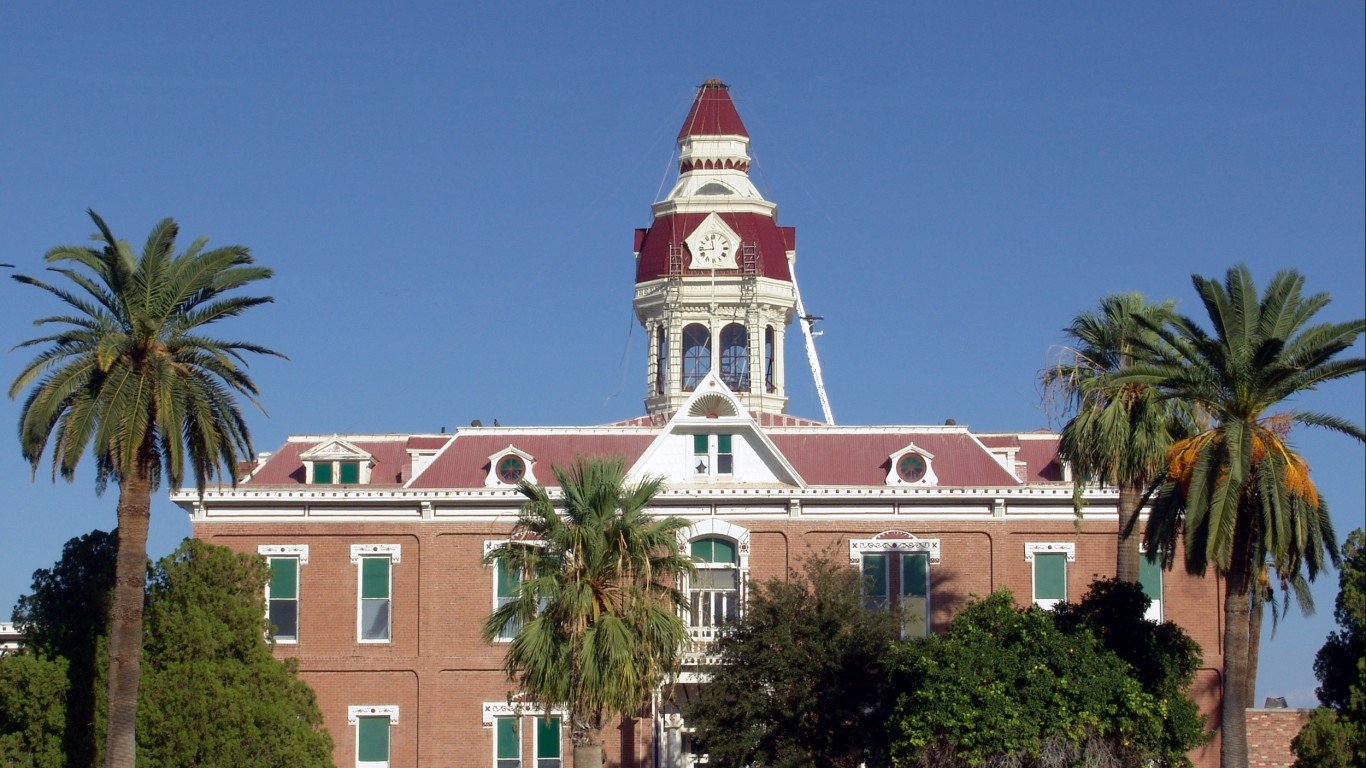
17. 85121
> Location: Casa Blanca, Arizona
> Poverty rate: 57.4%
> Number of people living below poverty line: 861 — 10,323rd highest of 20,931 zip codes (tied)
> Households receiving SNAP benefits: 22.4% — 2,239th highest of 20,930 zip codes (tied)
> Median household income: $13,095 — 4th lowest of 20,926 zip codes
[in-text-ad-2]

16. 79901
> Location: El Paso, Texas
> Poverty rate: 58.5%
> Number of people living below poverty line: 5,144 — 2,043rd highest of 20,931 zip codes
> Households receiving SNAP benefits: 53.7% — 20th highest of 20,930 zip codes
> Median household income: $13,574 — 5th lowest of 20,926 zip codes

15. 37915
> Location: Knoxville, Tennessee
> Poverty rate: 59.3%
> Number of people living below poverty line: 3,105 — 4,059th highest of 20,931 zip codes
> Households receiving SNAP benefits: 50.5% — 39th highest of 20,930 zip codes (tied)
> Median household income: $15,571 — 16th lowest of 20,926 zip codes
[in-text-ad]

14. 45225
> Location: Cincinnati, Ohio
> Poverty rate: 59.4%
> Number of people living below poverty line: 5,312 — 1,928th highest of 20,931 zip codes (tied)
> Households receiving SNAP benefits: 49.0% — 53rd highest of 20,930 zip codes (tied)
> Median household income: $14,198 — 6th lowest of 20,926 zip codes

13. 06702
> Location: Waterbury, Connecticut
> Poverty rate: 59.5%
> Number of people living below poverty line: 1,650 — 7,030th highest of 20,931 zip codes (tied)
> Households receiving SNAP benefits: 65.2% — 5th highest of 20,930 zip codes
> Median household income: $12,908 — 3rd lowest of 20,926 zip codes

12. 86540
> Location: Nazlini, Arizona
> Poverty rate: 60.3%
> Number of people living below poverty line: 675 — 9,295th lowest of 20,931 zip codes (tied)
> Households receiving SNAP benefits: 48.5% — 58th highest of 20,930 zip codes (tied)
> Median household income: $10,588 — 1st lowest of 20,926 zip codes
[in-text-ad-2]

11. 57572
> Location: St. Francis, South Dakota
> Poverty rate: 60.5%
> Number of people living below poverty line: 1,209 — 8,619th highest of 20,931 zip codes (tied)
> Households receiving SNAP benefits: 51.2% — 34th highest of 20,930 zip codes
> Median household income: $14,514 — 7th lowest of 20,926 zip codes

10. 35443
> Location: Boligee, Alabama
> Poverty rate: 61.3%
> Number of people living below poverty line: 1,090 — 9,157th highest of 20,931 zip codes (tied)
> Households receiving SNAP benefits: 50.7% — 38th highest of 20,930 zip codes
> Median household income: $15,000 — 12th lowest of 20,926 zip codes
[in-text-ad]
9. 57577
> Location: Wanblee, South Dakota
> Poverty rate: 61.5%
> Number of people living below poverty line: 1,071 — 9,241st highest of 20,931 zip codes (tied)
> Households receiving SNAP benefits: 42.9% — 150th highest of 20,930 zip codes (tied)
> Median household income: $24,444 — 161st lowest of 20,926 zip codes

8. 44115
> Location: Cleveland, Ohio
> Poverty rate: 61.5%
> Number of people living below poverty line: 5,027 — 2,118th highest of 20,931 zip codes
> Households receiving SNAP benefits: 46.3% — 93rd highest of 20,930 zip codes (tied)
> Median household income: $14,952 — 11th lowest of 20,926 zip codes
7. 58335
> Location: Fort Totten, North Dakota
> Poverty rate: 61.9%
> Number of people living below poverty line: 1,162 — 8,824th highest of 20,931 zip codes (tied)
> Households receiving SNAP benefits: 44.6% — 111th highest of 20,930 zip codes (tied)
> Median household income: $26,250 — 251st lowest of 20,926 zip codes (tied)
[in-text-ad-2]

6. 98421
> Location: Tacoma, Washington
> Poverty rate: 64.5%
> Number of people living below poverty line: 1,004 — 9,575th highest of 20,931 zip codes (tied)
> Households receiving SNAP benefits: Not available
> Median household income: Not available

5. 38126
> Location: Memphis, Tennessee
> Poverty rate: 65.2%
> Number of people living below poverty line: 3,913 — 3,073rd highest of 20,931 zip codes (tied)
> Households receiving SNAP benefits: 53.6% — 21st highest of 20,930 zip codes (tied)
> Median household income: $12,676 — 2nd lowest of 20,926 zip codes
[in-text-ad]
4. 85911
> Location: Cibecue, Arizona
> Poverty rate: 66.2%
> Number of people living below poverty line: 1,303 — 8,221st highest of 20,931 zip codes (tied)
> Households receiving SNAP benefits: 57.3% — 16th highest of 20,930 zip codes
> Median household income: $14,545 — 8th lowest of 20,926 zip codes
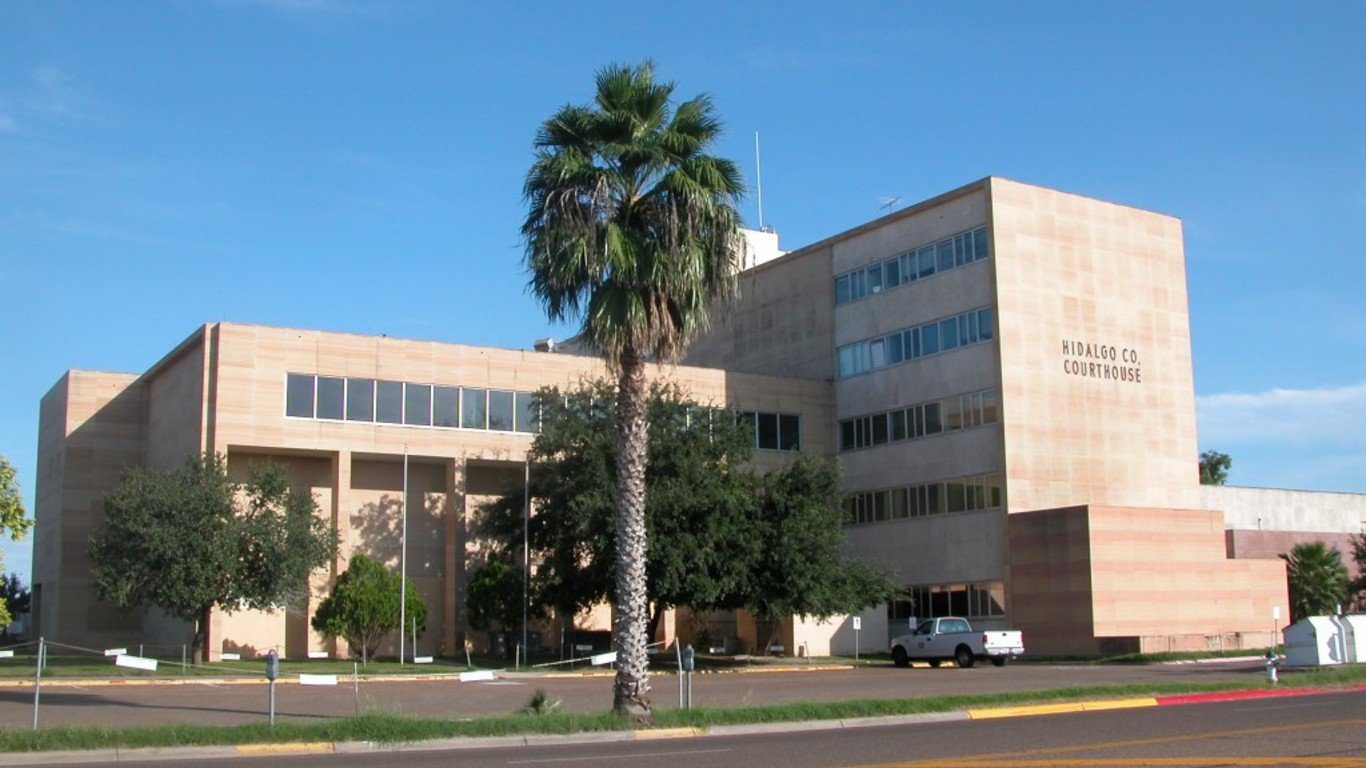
3. 78576
> Location: Penitas, Texas
> Poverty rate: 67.0%
> Number of people living below poverty line: 7,099 — 1,084th highest of 20,931 zip codes
> Households receiving SNAP benefits: 46.8% — 82nd highest of 20,930 zip codes (tied)
> Median household income: $21,230 — 74th lowest of 20,926 zip codes
2. 57570
> Location: Rosebud, South Dakota
> Poverty rate: 67.3%
> Number of people living below poverty line: 1,321 — 8,147th highest of 20,931 zip codes (tied)
> Households receiving SNAP benefits: 50.1% — 46th highest of 20,930 zip codes
> Median household income: $18,350 — 34th lowest of 20,926 zip codes
[in-text-ad-2]

1. 57772
> Location: Porcupine, South Dakota
> Poverty rate: 74.8%
> Number of people living below poverty line: 1,728 — 6,837th highest of 20,931 zip codes (tied)
> Households receiving SNAP benefits: 68.4% — 1st highest of 20,930 zip codes
> Median household income: $19,750 — 51st lowest of 20,926 zip codes
Methodology
To determine the ZIP codes with the highest poverty rates in the nation, 24/7 Wall St. reviewed five-year estimates of the percentage of people for whom poverty status had been determined as living below the poverty line from the U.S. Census Bureau’s 2019 American Community Survey.
We used ZIP Code Tabulation Areas — a census geography type which defines areal representations of United States Postal Service ZIP codes (USPS ZIP codes do not define geographic boundaries but instead are a network of mail delivery routes in a service area). We refer to Census ZCTAs as ZIP codes.
Of the 33,120 ZIP codes the Census publishes data for, 32,989 had boundaries that fell within one of the 50 states or the District of Columbia.
ZIP codes were excluded if poverty rates were not available in the 2019 ACS, if the population for which the poverty status had been determined was less than 1,000, if 25% or more of a ZIP code’s population were enrolled in undergraduate, professional, or graduate school during the same period, or if the sampling error associated with a ZIP code’s data was deemed too high.
The sampling error was defined as too high if the coefficient of variation — a statistical assessment of how reliable an estimate is — for a ZIP code’s poverty rate was above 15% and greater than two standard deviations above the mean CV for all ZIP codes’ poverty rates. We similarly excluded ZIP codes that had a sampling error too high for their population for which poverty status had been determined, using the same definition.
The remaining 20,931 places were ranked based on their poverty rates. To break ties, we used median household income..
Additional information on the number of people living below the poverty line, median household income, and the share of households receiving SNAP (formerly food stamps) benefits are also five-year estimates from the 2019 ACS.
Sponsored: Want to Retire Early? Start Here
Want retirement to come a few years earlier than you’d planned? Orare you ready to retire now, but want an extra set of eyes on your finances?
Now you can speak with up to 3 financial experts in your area for FREE. By simply clicking here you can begin to match with financial professionals who can help you build your plan to retire early. And the best part? The first conversation with them is free.
Click here to match with up to 3 financial pros who would be excited to help you make financial decisions.
Thank you for reading! Have some feedback for us?
Contact the 24/7 Wall St. editorial team.

 24/7 Wall St.
24/7 Wall St.
 24/7 Wall St.
24/7 Wall St.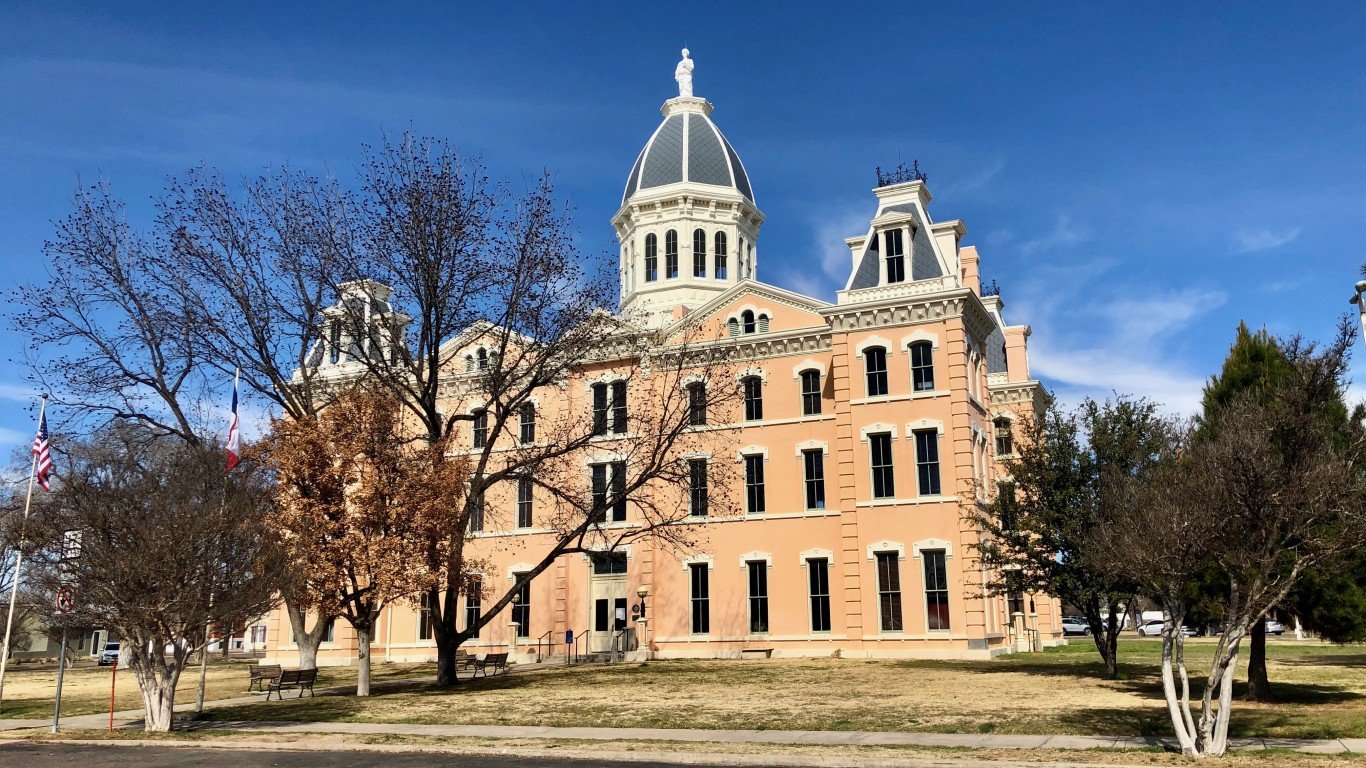
 24/7 Wall St.
24/7 Wall St.